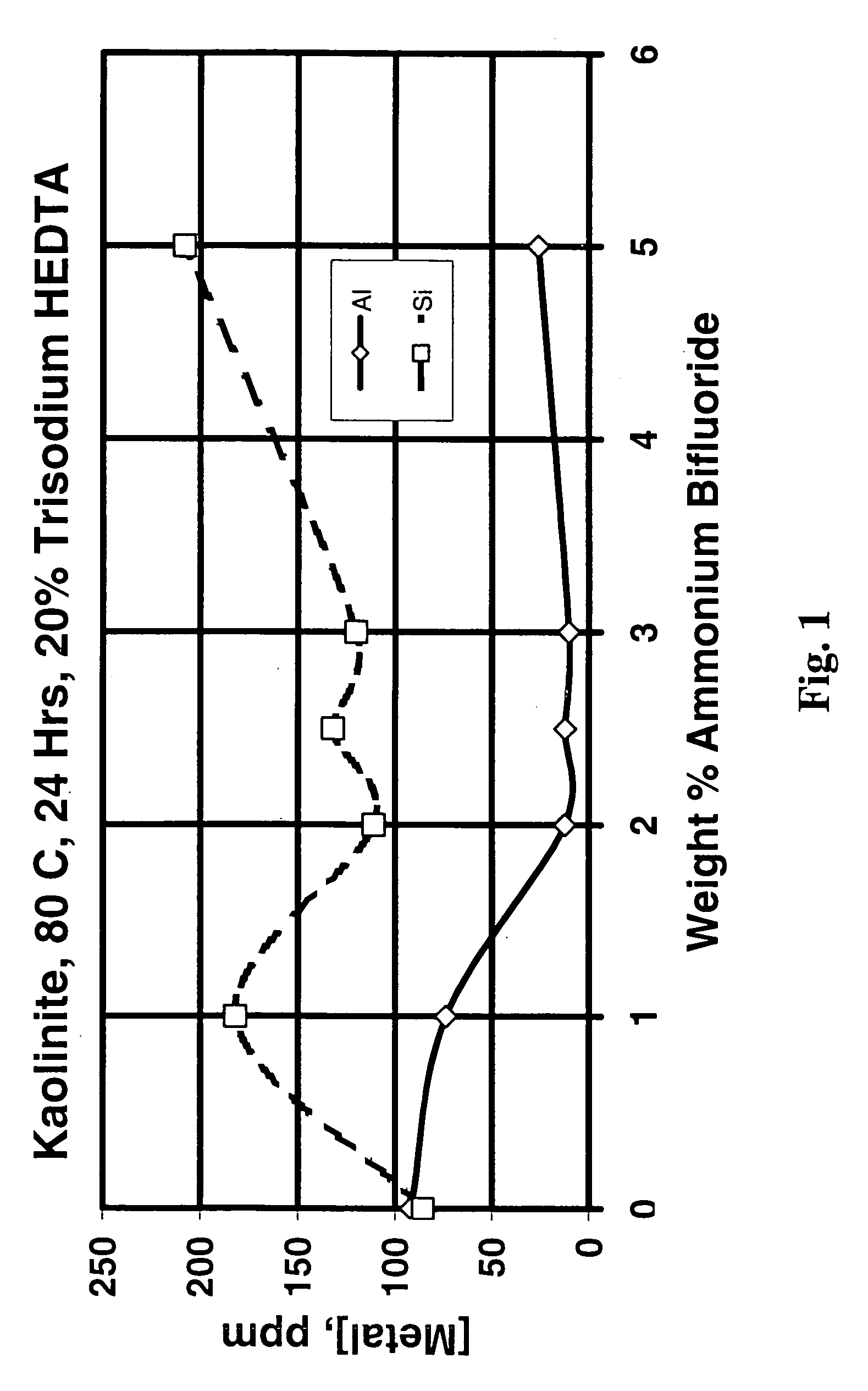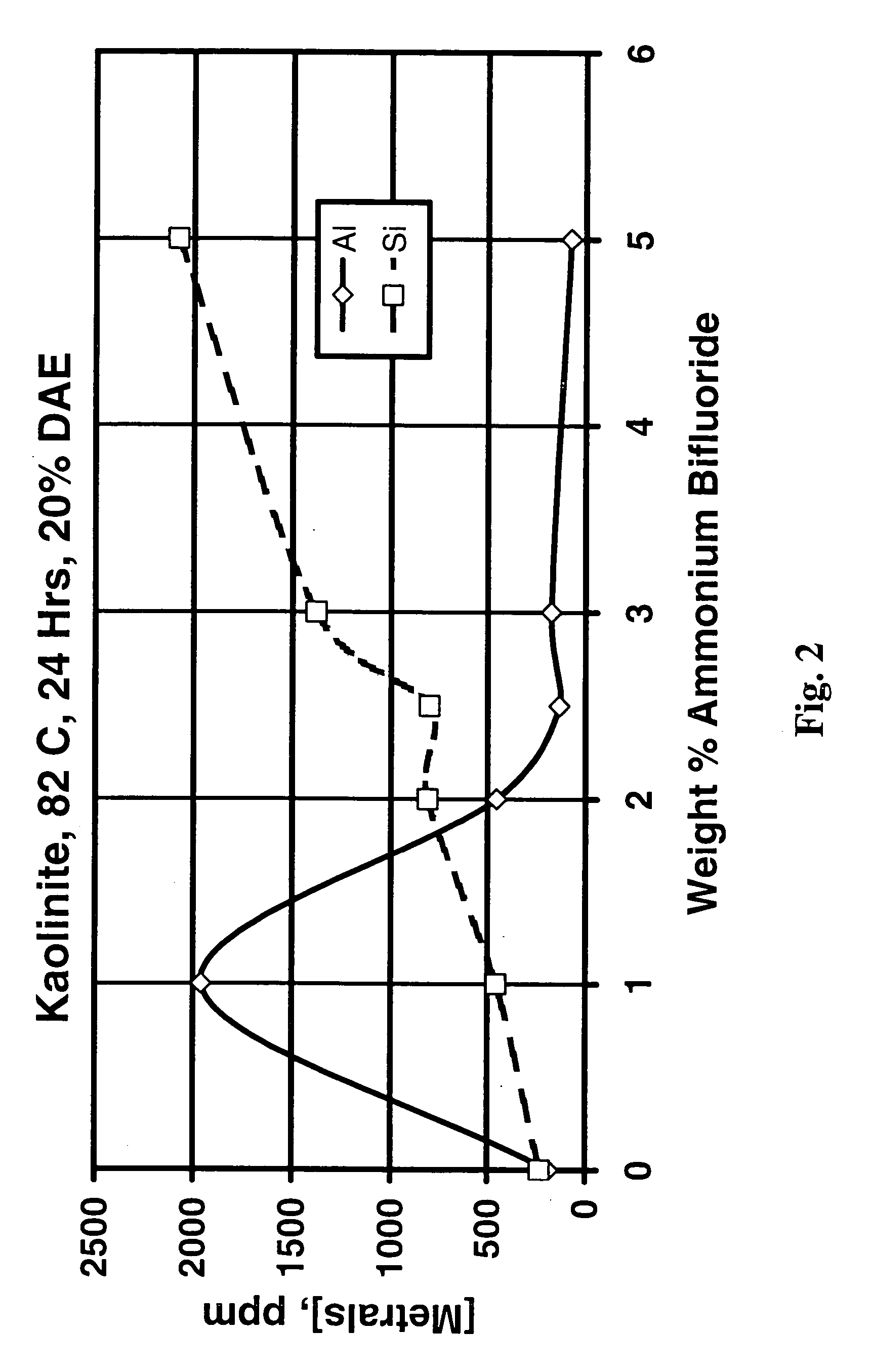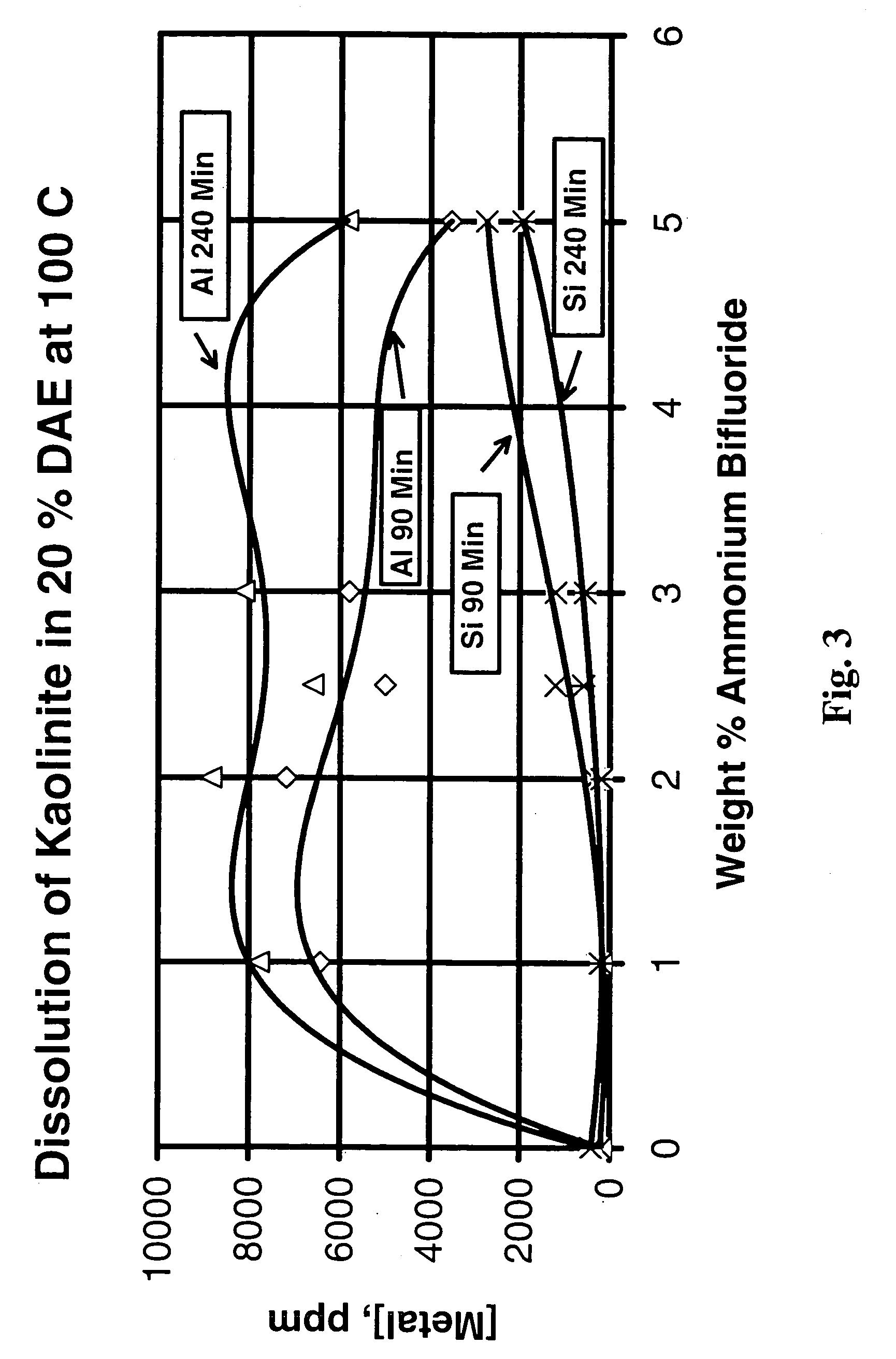Composition and method for treating a subterranean formation
a technology of subterranean formations and composition methods, applied in the direction of fluid removal, chemistry apparatus and processes, borehole/well accessories, etc., can solve the problems of damage to the formation, the acid and method used for carbonate stimulation is not the same as those used, and the fluid properties and procedures required for successful scale removal are different from those required for successful removal
- Summary
- Abstract
- Description
- Claims
- Application Information
AI Technical Summary
Benefits of technology
Problems solved by technology
Method used
Image
Examples
example 1
[0054]Certain chelating agents such as trisodium hydroxyethylethylenediamine triacetate (which we will refer to as “HEDTA” in these examples) and disodium diammonium ethylenediaminetetraacetate (which we will refer to as “DAE” in these examples) are more effective for increasing the permeability of short (six inch) Berea sandstone cores at temperatures above about 250° F. (121° C.) than any conventional fluids containing HF (generated from ammonium bifluoride precursor) that were tested. On the other hand, mineral dissolution tests in the slurry reactor showed that these chelating agents did not dissolve much of any of the minerals tested. With kaolinite, after 4 hours at 212° F. (100° C.) in 50 percent HEDTA the concentration of aluminum is about 80 ppm and the concentration of silicon is about 60 ppm; after 4 hours at 302° F. (150° C.) the concentration of aluminum is about 1100 ppm and the concentration of silicon is about 450 ppm. However, after 4 hours in 9:1 mud acid, at only ...
example 2
[0057]Addition of ammonium bifluoride to fluids containing the chelating agents greatly increases the amount of aluminum removed from kaolinite and Berea sandstone, but does not improve the stimulation of the Berea sandstone. Compare, for example, rows 23 and 24 in Table 1 for HEDTA, and rows 10 and 11 for DAE, that show greatly increased dissolution of aluminum from kaolinite with the addition of 1 weight percent ammonium bifluoride (especially for DAE, especially when the temperatures are considered) with little change in silicon. However, rows 1 and 2 of Table 2 for HEDTA, and rows 5 and 6 for DAE, show that the ammonium bifluoride significantly decreased the permeability improvement for HEDTA, and had little effect on the permeability improvement for DAE. These results show that the permeability of a sandstone damaged by the presence of kaolinite in the pores would be improved by the proper chelant / ammonium bifluoride combination. However, note from rows 12 and 13 of Table 2 tha...
example 3
[0058]Since the Berea sandstone used consisted of a number of minerals but was undamaged, dissolution of the Berea sandstone was not a good experiment to evaluate the ability of various treatment fluids to dissolve specific minerals that might cause damage in hydrocarbon-producing formations. Therefore, to determine the effect of varying the treatment fluid composition, kaolinite dissolution experiments were performed. FIG. 1 shows the ppm aluminum and silicon in solution after treatment of kaolinite (using 100 ml of treatment fluid and 2 g clay in static tests) with 50 weight percent as-received (20 weight percent active) HEDTA at 176° F. (80° C.) for 24 hours and varying amounts of ammonium bifluoride from 0 to 5 weight percent. There does not appear to be any benefit in adding ammonium bifluoride to trisodium HEDTA at this temperature, probably because of the low solubility of NaF (“HEDTA” is actually trisodium HEDTA and contains over 5 percent sodium). However, rows 23 and 24 of...
PUM
| Property | Measurement | Unit |
|---|---|---|
| porosity | aaaaa | aaaaa |
| diameter | aaaaa | aaaaa |
| temperatures | aaaaa | aaaaa |
Abstract
Description
Claims
Application Information
 Login to View More
Login to View More - R&D
- Intellectual Property
- Life Sciences
- Materials
- Tech Scout
- Unparalleled Data Quality
- Higher Quality Content
- 60% Fewer Hallucinations
Browse by: Latest US Patents, China's latest patents, Technical Efficacy Thesaurus, Application Domain, Technology Topic, Popular Technical Reports.
© 2025 PatSnap. All rights reserved.Legal|Privacy policy|Modern Slavery Act Transparency Statement|Sitemap|About US| Contact US: help@patsnap.com



